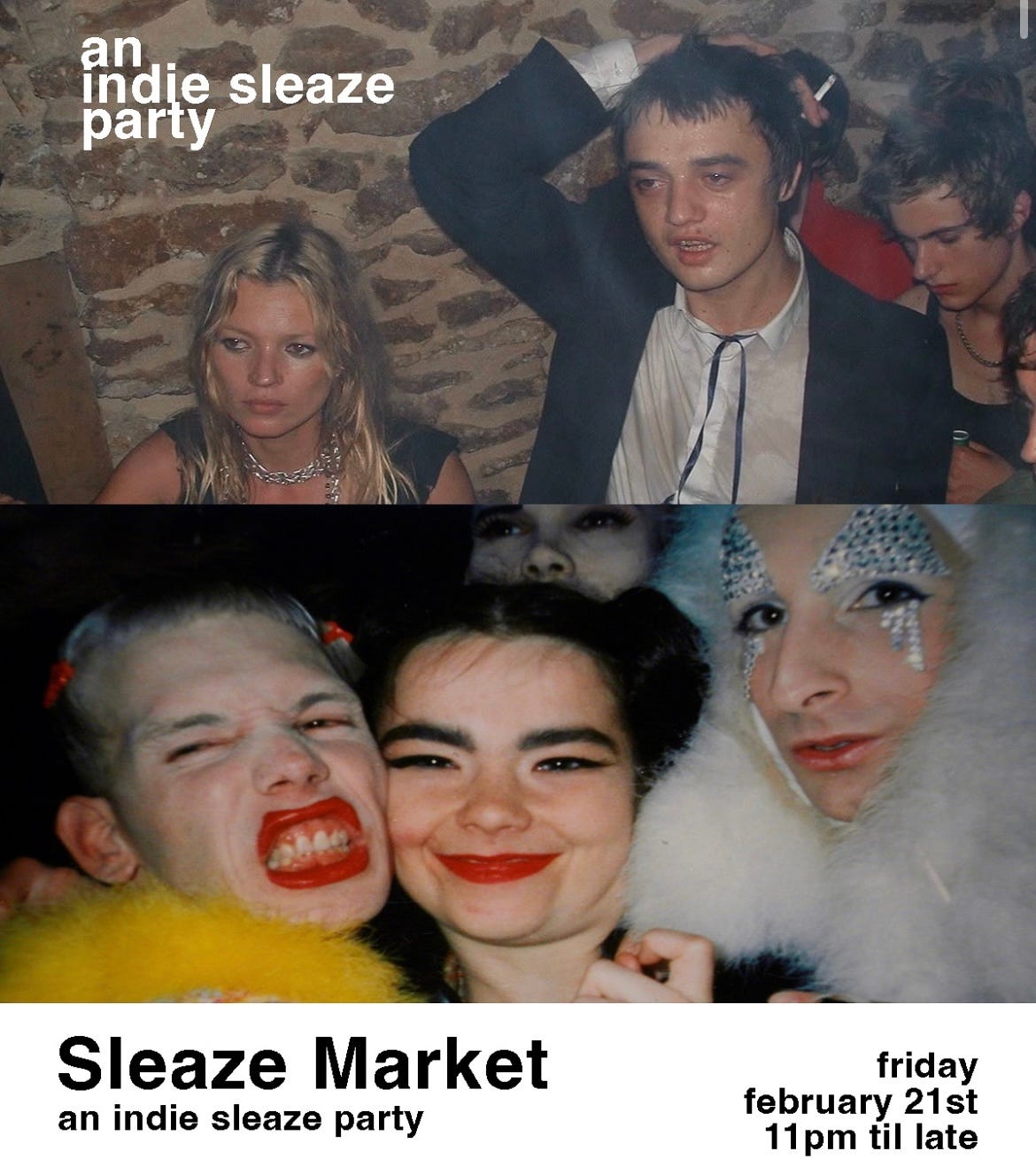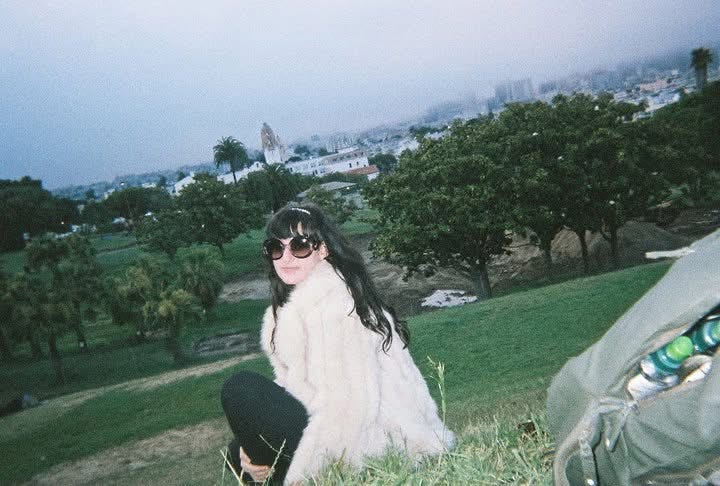Hell is seeing your formative years performed as a costume by the generation behind you.
Earlier this year, I felt those flames flickering in my face when I willingly made the choice to attend an “indie sleaze” nostalgia party at an 18-and-up nightclub in Brooklyn. I learned a lot that night, primarily that I am old and uncool. A bunch of 20-year-old college students dressed exactly the way I did when I was their age looked at me like I was a weird old loser. Buddy, I’m your future.
The promotion for the event itself had an incredibly strange framing that did not reflect the reality of this themed event. The Instagram ad — which genuinely wore me down with how often the algorithm bombarded me with it — featured a photo of Pete Doherty, the Libertines frontman and formerly the sleaziest of all indie guys.
This baffled me. Amongst the other bands listed for that night’s playlist were the Strokes, LCD Soundsystem, MGMT — whatever. A bunch of American bands whose legacies live on long past their prime output years because they still play shows and tour and periodically release new music.
But the Libertines, I thought, had no chance of permeating the American Gen Z indie sleaze canon. Pete Doherty — who has apparently cleaned up his act — still can’t get a visa to play shows in the United States due to his extensive criminal record.
Trust me: I email his representatives every few months to ask if there are any signs of hope yet. The answer is no, and I don’t think it’s going to get much easier for foreign artists, even those without criminal records, to tour in the United States under our current administration.
The Libertines, despite the efforts of myself and Spencer Hall, are destined to be forgotten in the United States. They even put out a new album last year and toured it at festivals in Europe. The Libertines are very much alive and active across the Atlantic. Did you — a person who was born in or before 1990 — even know that?
So, as a person who can recall the precise moment I was introduced to the Libertines (in a minivan in high school as my school’s only true hipster drove us to a date to see a Pirates of the Caribbean movie for some reason), I was shocked to see Pete, my favorite troubled lad, being used in promotional material for a party for people born after his band’s eponymous album was released.
I wondered, loserly: Do Zoomers know about the Libertines? Had I gotten it all wrong? Had Pete (and Kate) remained relevant long after their tabloid heydays?
Yes and no, I learned. Zoomers are replicating the aesthetics of that drug-fueled era of hedonism with scary precision. But they don’t know much about their sources of inspiration or why they looked that way. This is normal, of course. In the 1970s aesthetic revival of my own teenage years, I remember my mom telling me she would have kept all of her clothes if she’d known I’d wind up begging her to buy them. I knew about “Janis Joplin,” but mostly I’d watched “That ‘70s Show” all the time.
It was funny to feel that same cycle happen to me, walloping me in the face with the way a younger generation treated my earnest aesthetic as a costume. I watched my teenage years and early adulthood interpreted through the lens of their own sensibilities.
At this party for people 15 years younger than me, I noticed at least a few people — whose gender I won’t assume but presented as “young lads” — wearing Pete’s stupid striped shirts and ties with his mod little haircut. There was at least one trilby hat. The look was unmistakable.
But I was more interested in the many young women who looked just like Kate Moss. They had the semi-matted blonde hair, big coats and small shorts, and black gel eyeliner around the entire rims of their eyes.
I asked one of the mini Mosses if she got her style inspiration from one of the most famous supermodels of all time.
“I think I’ve heard of Kate Moss,” she told me with skepticism and confusion.
Ok thanks, got it. If even Kate Moss’s 15 minutes can be up, the rest of us might as well recede from society entirely. Pete Doherty’s only remaining presence in America appears to be in my dumb little head.
As for the party itself, the playlist didn’t remotely reflect the “indie sleaze” promise. The DJ played some Ke$ha (bless her), one remix of Mr. Brightside, but not much that was actually representative of that scene and era. They did play one song by Crystal Castles and D.A.N.C.E. once, early on in the night. Honestly, I don’t even know what counts as “indie sleaze.” But it’s not Ke$ha (bless her).
But pretty early on in the evening I realized that the ahistorical playlist was way less interesting than the portrayal of aughts aesthetics. I looked around at a generation that is accused of being boring, hydrated, and not remotely horny, and realized they would be absolutely and completely scandalized by the realities of the scene they were replicating.
I doubt — and hope — that no one at that party would even consider recreational opioid usage. Regrettably, I asked one partygoer if she was aware that the reason people had matted hair and loose neckties was because they were up using heroin all night. She recoiled in the exact same way I would have reacted at age 20 if some random adult had said the words “crack cocaine” to me.
So, allow me to have learned this lesson for you. Don’t ask random people who are younger than you if they know about the cultural impact of heroin that existed before they were born. Real reporting is necessary if a writer wants to describe the cultural trends in our society accurately and responsibly. But in the case of “do you know about the former prevalence of heroin” — we are probably safe to make an assumption.
As the night went on, I stopped thinking so much about how these young people learned to dress like the sleazy socialites of my youth and began thinking more about why those artists and models presented the aesthetic that they did. Their eyeliner was smudgy because they hadn’t slept. They were incredibly skinny because media pressure on women was insane and they took advantage of the way one drug in particular can suppress a person’s appetite.
The haircuts that the Zoomer mascs were styling down to their faces, probably with the help of pomade, were imitating the type of texture that, again, came naturally from the art of living hard.
In retrospect, even as a person who wasn’t an adult or in New York or London in 2005, that’s crazy. I realized how insane I would sound trying to explain that cultural moment to people who didn’t follow it at the time. I did try to explain it, as I said — and I regret doing it because I sounded insane.
Ultimately I found a lot of comfort in knowing that people are out there replicating the aesthetics of that era but not the actions. Those girls went home to do a 23-step skincare routine and would never even conceive of sleeping in eyeliner. The lads go to nightclubs that make patrons sit down for a conversation about consent before entering the venue.
Honestly, I did find this crowd to be kind of boring. No one seemed sloppy. The bathrooms at the venue were being used for actual urination activities and mirror selfies. One person put the words “MAKE OUT?” up on her phone and held it above her head in the least horny post-midnight environment I’ve ever encountered. You’re allowed to assume how that turned out, too.
My thesis that Pete Doherty and the Libertines specifically will be erased from the American sleaze canon seems to be firmly correct. I can live at partial peace with that while I continue to inquire about when he’ll be allowed to return to the States. I don’t know how much enthusiasm my own cohort would even summon for a Libertines tour at this point. Culture evolves, trend cycles detach a vibe from its origins, and the generation behind mine actively works to stay off the road to ruin.
But loudly and proudly, I am still on team free Pete. He didn’t work so hard to stay alive past age 25 just to be forgotten.








